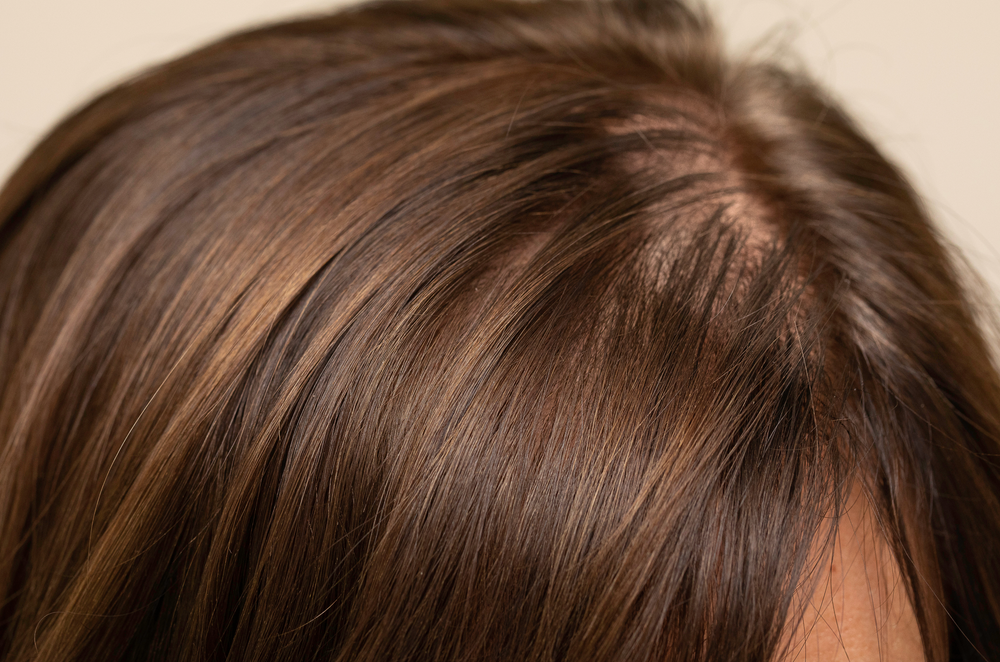But did you know that one of the most prevalent causes of hair loss in the world is an increase in DHT?
Men are more likely to lose their hair than women, who do not share the same genetic predisposition to hair loss, because many of them constantly produce both DHT and testosterone throughout their lifetimes.
Male and Female Hair Growth
Hair grows differently depending on gender. Women grow longer hairs while men tend to grow shorter ones. However, there are similarities between male and female hair growth. They both go through the same stages of hair growth.
Hair Growth Cycles
Your hair goes through cycles of growth and shedding. You shed about 50 strands of hair per day. This cycle repeats itself approximately three times each month.
The three phases of the hair development cycle are anagen (growing phase), catagen (regressing phase), and telogen (resting phase). Anagen hair cells have a high rate of mitosis and are some of the human body's fastest-replicating cells.
If you notice your hair falling off more frequently than usual, it might be because you're experiencing one of the following phases of hair growth.
Anagen Phase
The anagen phase is the period in which hair growth occurs most rapidly. This is followed by the catagen phase, which involves the shedding of the outer root sheath cells. The telogen phase follows, during which the hair shaft is fully formed.
Catagen Phase
The catagen phase is one of three phases of the hair growth cycle. In the catagen phase, hair follicle cells are actively dividing and dying. This causes the hairs to become shorter and thinner. At the end of the catagen phase, most of the hair follicles die off. The remaining follicles enter into the telogen phase.
Telogen Phase
The telogen phase is the resting stage of the hair growth cycle. During this period, the hair follicles rest and go into a state of dormancy. This phase lasts approximately four months. After this time, the hair follicles re-enter the catagen phase.
What is Dihydrotestosterone (DHT)?
Dihydrotestosterone, or DHT, is a hormone produced by both men and women. The prostate (for males) and ovaries (for females) transform testosterone into DHT, which the body subsequently releases. This is made easier by the enzyme 5-alpha reductase (5-AR).
DHT is a significant factor in puberty and helps male characteristics – such as muscles, facial hair and a deep voice – grow and remain. It aids in the regulation of organ function and the production of estrogen in females. These hormones help you maintain muscle mass as you age and promote fertility and sexual well-being.
Some individuals may have sleep apnea, aggression and excessive sweating due to increased DHT levels in the body.
Here are some key points about DHT:
What is DHT's Role in Hair Loss?
The hormone dihydrotestosterone (DHT), which is produced by the testes and adrenal glands, is responsible for the production of hair growth. When there are too many DHT molecules floating around, it leads to hair loss. This happens because the body produces more DHT than the hair follicle needs, resulting in the follicle producing fewer hairs. As the number of hairs decreases, the hair becomes thinner and eventually falls out. In addition, the skin thickens, making the head look bigger.
Why Do High Levels of DHT Lead to Hair Loss?
DHT builds up over time in the hair follicles, disrupting the cycle of hair development. It shortens the hair development cycle and shrinks your hair follicles through a process called miniaturization. Hair reproduction slows down – remaining in the resting phase for longer or reducing the growing phase. When DHT levels are excessive, it takes longer for new hair to grow once the old hair falls out.
DHT's negative impact on the follicles causes your hair to: thin out; become brittle, fragile, lighter in color; and fall out more quickly with each succeeding life cycle. Eventually, the hair follicles shut down and stop generating hair.
Depending on the androgen receptor (AR) gene a person carries, certain individuals are more vulnerable to DHT's effects on scalp hair. The AR gene may make male-pattern hair loss more likely by increasing androgen sensitivity in the follicles of the scalp.
Does DHT Hair Loss Differ in Women Compared to Men?
Male- or female-pattern baldness, commonly known as androgenetic alopecia, is the most prevalent kind of hair loss. Dihydrotestosterone (DHT), a byproduct of the male hormone testosterone, is what causes the hereditary disorder.

Men's hair thinning can start to be evident in their teens or early 20s. Menopause makes women's hair thinning worse and is likely to start around midlife. Genes determine androgenetic alopecia in both men and women, meaning neither lifestyle nor environmental factors can cause it. Women are more likely than men to experience traction alopecia, which is a hair loss condition occurring when hair follicles are damaged by repeated pulling – usually from tight ponytails, braids, and hair extensions.
Telogen effluvium is a type of transient hair loss brought on by trauma, such as extreme stress or anxiety, protracted sickness, major surgery, nutritional inadequacies, physical trauma, or psychological events. Telogen effluvium affects both men and women equally. The majority of women who are pregnant or just gave birth have this type of hair loss.
Hair loss brought on by underlying medical disorders or drugs also affects both men and women equally.
What is Male-Pattern Baldness?
The most common type of hair loss is male-pattern baldness, which is a genetic condition. It can also occur due to stress, illness, hormonal changes, medications, poor nutrition, and age. Even though hair loss is often associated with aging, it can happen at any age.
Male-pattern baldness occurs due to a genetic mutation of the gene that produces testosterone. As a result, the body stops making enough testosterone to keep the hair follicles healthy. This genetic condition usually starts around age 30 and progresses gradually.
DHT and the Norwood Scale
Hair loss is common among men. In fact, there are many reasons why men lose their hair, including genetics, aging, stress, diet and medications. One thing most people don't know is hair loss is far more common in men than women.
There are two main types of pattern baldness conditions: alopecia totalis and alopecia universalis. Alopecia totalis affects both sexes equally while alopecia universalis is more common in men and usually occurs later in life. The Norwood scale is a tool to help doctors assess how severe the problem is.
In general terms, hair loss is classified into three stages according to Norwood scale:
- Stage I includes thinning hair that doesn't affect facial hair.
- Stage II involves partial hair loss affecting the crown area.
- Stage III covers complete hair loss.
The Norwood scale provides information about the extent of hair loss and the type of treatment needed. However, it does not indicate whether a person is likely to develop further problems, such as scarring or skin cancer.
Treatment for Male-Pattern Baldness
Male-pattern baldness affects about half the population globally. In some countries, it is even considered a social stigma. There are two main types of treatment available for male-pattern balding: surgical and nonsurgical.
The most common type of surgery involves harvesting hair follicles from areas on the head where hair growth is normal and moving them to bald spots. This technique is called Follicular Unit Transplantation (FUT). Another option is Hair Replacement Surgery (HRS), which uses small pieces of donor skin to cover the bald spot. Both techniques can be effective, although HRS requires multiple treatment sessions over several months.
Nonsurgical treatments include the topical application of DHT-blocking substances, laser therapy, and low-level light therapy.
What Is Female-Pattern Baldness?
Female-pattern baldness, also known as female-hair loss, occurs due to thinning of the scalp hair follicles. This causes the hair on the crown area of the head to become thinner over time. Hair loss starts around the temples and progresses towards the front of the scalp. In some cases, it can spread to the sides of the head.
The cause of female-pattern baldness is often genetics, as both parents must carry the gene for this condition to pass it down to their children. Other factors include hormonal changes during puberty, pregnancy, childbirth, stress, illness, medications and aging.
Women are less likely to seek treatment for pattern baldness conditions than men. Studies show that about 90% of women do not discuss hair loss with their doctors.
DHT and the Ludwig Scale
The Ludwig scale classifies patterns of hair loss into one of four categories. Each category represents a specific type of hair loss:
- Category A includes thinning hair around the sides and front of the head.
- Category B involves total hair loss on the crown area, including the forehead and vertex.
- Category C describes a receding hairline.
- Category D refers to complete baldness.
There are four stages of female-pattern hair loss, according to the Ludwig scale, and each stage is caused by different factors:
- Stage I is due to genetics
- Stage II is triggered by hormones
- Stage III is related to stress
- Stage IV is linked to aging
DHT and Menopause
The hormone dihydrotestosterone (DHT) is the main cause of hair loss in men, and it can also contribute to hair thinning in women during perimenopause and menopause. This is because DHT levels rise during those periods.
Menstrual cycles are regulated by hormones produced by the ovaries. During menstruation, estrogen levels usually drop while progesterone levels increase. When progesterone levels decrease, follicles can stop producing testosterone and begin producing DHT. As a result, hair growth often slows down and hair begins to fall out.
Hair loss in women is caused by several factors such as genetics, hormonal changes, stress, diet, medications, medical treatments and environmental influences. Some women lose hair due to genetic disorders such as alopecia areata. Others suffer from a condition called telogen effluvium where the body stops producing enough hair. Stress and illness can also trigger temporary hair loss.
Treatment for Female-Pattern Baldness
There are primarily two surgical and nonsurgical therapy options for female pattern baldness.
Hair transplantation is a procedure where tiny grafts are taken out of areas of the scalp that still grow hair and transplanted into areas of the scalp that are not growing hair. This technique is typically done under local anesthesia.
Another option for women who want a less obvious scarring outcome is strip surgery. A strip of skin containing a number of hairs is removed from one side or the back of the scalp and placed over the crown area of the head.
Effective nonsurgical treatments include topical application of substances with DHT-blocking properties, laser treatments, and hormone replacement therapy (HRT).
What is the Difference Between Male and Female-Pattern Baldness?
Men and women usually exhibit hair loss and thinning differently. A receding hairline, an M-shaped pattern of hair loss, and ultimate near or total baldness are the hallmarks of male hair loss. Women lose hair more gradually and subtly. The crown of the head, not the hairline, is where thinning starts for women.
Economic Impact
More than $1 billion is spent annually in the United States alone on hair loss treatments. There are effective treatments available, including prescription and over-the-counter drugs, herbal concoctions, shampoos, wigs, hairpieces, and surgical hair restoration. There are also misleading and ineffective treatments, or treatments that only work for specific types of hair loss conditions or hair types. Only 3% of the almost 80 million Americans who experience hair loss contact a doctor.
Psychological Aspects
One of the few body parts we can directly influence to convey our uniqueness or predetermined identity is our hair. Age, sexual attractiveness, and masculinity are all factors in the psychology of hair loss. For most men and women, experiencing hair loss is an unpleasant and stressful event. Worrying and obsessing over hair loss often leads to increased behavioral efforts to conceal, compensate for, and cope with the situation.
It is reasonable to assume hair loss in women will be more distressing, if not mentally devastating. Women report much higher levels of socioemotional stress and coping mechanisms. Men and women who struggle to live with their condition often look for solutions to slow down or stop their hair loss and improve their body-image.
Lifestyle and Hair loss
Doctors may recommend lifestyle changes such dietary modifications, stress reduction, and sleep hygiene. Dietary modifications can improve overall health and well-being. Stress reduction can help reduce anxiety and depression. Sleep hygiene can help us feel better about ourselves.
Lifestyle Changes Can Improve Overall Health and Wellness
Lifestyle changes can improve overall general health and wellness. They are especially helpful for managing symptoms associated with androgenetic alopecia.
For example, exercise helps keep our bodies healthy and strong. Exercise improves physical fitness, reduces stress, and strengthens muscles. It can also help people cope with emotional challenges like grief, anger and sadness.
Sleep Hygiene Helps Us Feel Better About Ourselves
Poor sleep quality can make us feel anxious, depressed, angry and stressed. Poor sleep quality can also cause weight gain, fatigue, headaches and digestive problems. In addition, poor sleep quality can lead to increased risk for heart disease, diabetes, high blood pressure, stroke, cancer and premature death.
Worried About Hair Loss? Get Help Today!
As a progressive condition, hair loss starts out gradually and worsens over time. If your hair starts to change, there may be a more significant problem. Early detection results in better outcomes and fewer side effects, so you don't want to wait too long to seek treatment.
There are numerous therapies that might aid in re-establishing healthy hair growth. The optimal course of action may require discussion with your doctor.
Nonsurgical Hair Loss Treatments
While many people suffer from thinning hair, others experience balding. There are several nonsurgical treatments that can help treat hair loss.
There are over-the-counter products capable of helping you manage thinning hair. These include shampoos, conditioners, vitamins, herbal remedies and topical creams. Some people use nonsurgical hair loss treatments to stimulate growth. These include laser therapy, low level light therapy (LLLT), caffeine, protein drinks and green tea.
Some of these remedies are ingredients in Divi's lineup of scalp products. Divi's Scalp Serum, Shampoo & Conditioner are nonsurgical treatments to promote hair growth through the cultivation of an improved scalp.
The expert team at Divi crafted these three products with customers in mind. We use clean, vegan products and received the dermatologist stamp of approval for every included ingredient.
Check out Divi's website today to find a remedy for your struggles with your scalp and hair.






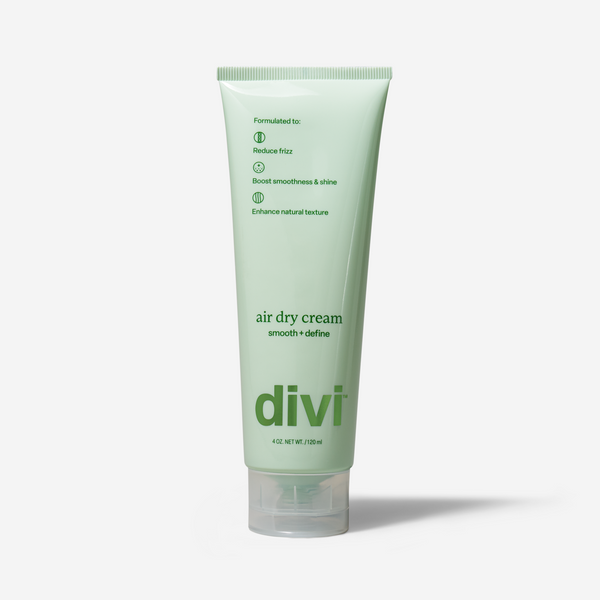


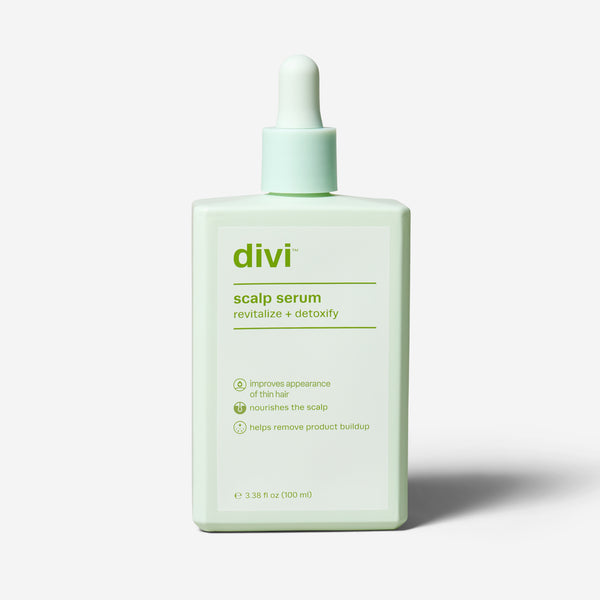

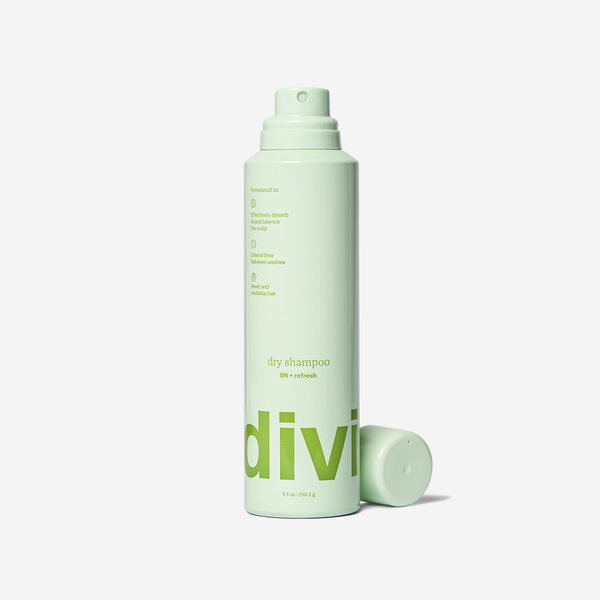


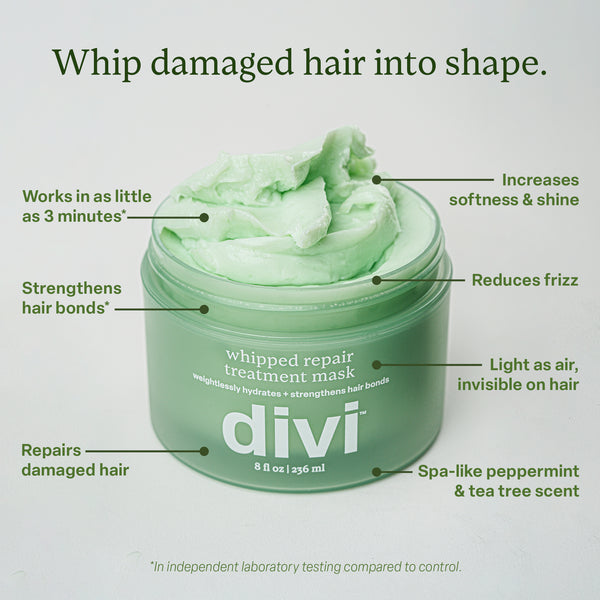
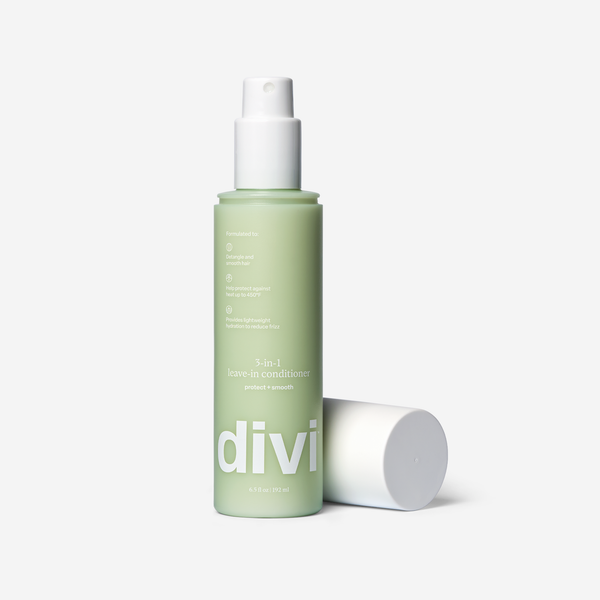










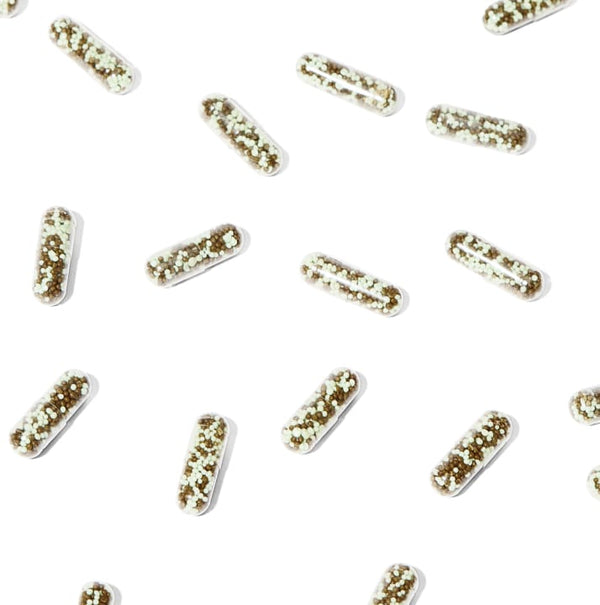




















 30ml Scalp Serum
30ml Scalp Serum
 100ml Scalp Serum
100ml Scalp Serum
 Volumizing Shampoo
Volumizing Shampoo
 Hydrating Shampoo
Hydrating Shampoo
 Travel-Sized Volumizing Shampoo
Travel-Sized Volumizing Shampoo
 Travel-Sized Hydrating Shampoo
Travel-Sized Hydrating Shampoo
 Volumizing Conditioner
Volumizing Conditioner
 Hydrating Conditioner
Hydrating Conditioner
 Travel-Sized Volumizing Conditioner
Travel-Sized Volumizing Conditioner
 Travel-Sized Hydrating Conditioner
Travel-Sized Hydrating Conditioner
 3-in-1 Leave-In Conditioner
3-in-1 Leave-In Conditioner
 Best Sellers Bundle
Best Sellers Bundle
 Volumizing Starter Bundle
Volumizing Starter Bundle
 Hydrating Starter Bundle
Hydrating Starter Bundle
 The Healthy Hair Bundle
The Healthy Hair Bundle
 Hair Vitamins Trio
Hair Vitamins Trio
 Dry Shampoo
Dry Shampoo
 Hair Vitamins
Hair Vitamins
 Volumizing Shampoo & Conditioner
Volumizing Shampoo & Conditioner
 Travel-Sized Volume Duo
Travel-Sized Volume Duo
 Hydrating Shampoo & Conditioner
Hydrating Shampoo & Conditioner
 Travel-Sized Hydrating Duo
Travel-Sized Hydrating Duo
 Travel-Sized Dry Shampoo
Travel-Sized Dry Shampoo
 Travel-Sized Dry Shampoo Trio
Travel-Sized Dry Shampoo Trio
